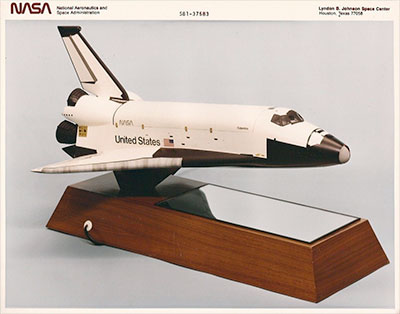|
Author
|
Topic: OV-102: Columbia's tail pod (SILTS experiment)
|
jasonelam
Member Posts: 691
From: Monticello, KY USA
Registered: Mar 2007
|
 posted 12-14-2007 06:22 AM
posted 12-14-2007 06:22 AM
   
What was the purpose of the tail pod installed on space shuttle Columbia in the 1990s? I heard that it was for a camera, and if it was, would it have been useful on STS-107 to see the damage on the RCC from the ET foam? |
Harald Kraenzel
Member Posts: 304
From: Dinslaken,Germany
Registered: Nov 2005
|
 posted 12-14-2007 07:55 AM
posted 12-14-2007 07:55 AM
   
If I remember correctly the camera was used to take images of the temperature distribution on the wings. I have seen those in the internet somewhere in the past.But independent from that I cannot see how you would be able to see the RCC panel's area in question from that viewing point that far back and high on the vertical tail. It's a matter of the viewing angle. |
Robert Pearlman
Editor Posts: 42988
From: Houston, TX
Registered: Nov 1999
|
 posted 12-14-2007 08:57 AM
posted 12-14-2007 08:57 AM
   
The tailpod was added in 1984 after STS-9 and the instrumentation flown inside it, referred to as the Shuttle Infrared Leeside Temperature Sensing (SILTS) package flew until 1991, when the camera and its related hardware were removed (the pod itself remained though).The purpose of the SILTS pod was to image in infrared the leeside, or upper surfaces of the orbiter and its left wing during reentry. Thus, it wouldn't have been useful for preventing what transpired on STS-107 but its data post-accident (if recovered intact) might have further helped with assembling a timeline of the break-up as the plasma entering from below heated the upper surfaces. |
nasamad
Member Posts: 2121
From: Essex, UK
Registered: Jul 2001
|
 posted 12-14-2007 09:16 AM
posted 12-14-2007 09:16 AM
   
Why the left wing? Was it just pointing that way and couldn't do both or was there a better reason? |
Robert Pearlman
Editor Posts: 42988
From: Houston, TX
Registered: Nov 1999
|
 posted 12-14-2007 09:57 AM
posted 12-14-2007 09:57 AM
   
To quote from the above linked NASA website: ...the infrared camera system is mounted in such a way that it rotates to view the orbiter leeside surfaces through either of two windows - one offering a view of the orbiter fuselage and the other a view of the left wing. |
Jay Chladek
Member Posts: 2272
From: Bellevue, NE, USA
Registered: Aug 2007
|
 posted 12-16-2007 01:51 AM
posted 12-16-2007 01:51 AM
   
The SILTS experiment flew on several flights, but the equipment in the pod was deactivated and removed long before STS-107, so it was not onhand to record anything during the breakup. Plans were originally to have Columbia's tail revert to its normal shape during an OMDP after the SILTS sensors were removed, but windtunnel test data showed that the pod didn't produce any long term problems with Columbia. So the pod was left on.As for why only the left wing, it partly had to do with the instrumentation added to Columbia for its test flights. Due to budget constraints, it was decided to only wire up the left wing with extra instrumentation when Columbia was being built. NASA originally wanted both wings wired in this way, but they could only do one wing and since the shapes were the same (just mirror image), the data collected from one wing could be interpreted for both. When SILTS was installed, its IR cameras focused on the left wing, since it would allow engineers to compare the readings from the cameras with the data obtained from the onboard sensors already in the wing. Those wing sensors remained on Columbia until she broke up. As I understand it, they were most helpful in pinpointing the source and sequence of the breakup in flight since the RCC damage occurred to the left wing. Apparently, the other orbiters weren't wired with wing sensors in the same manner that Columbia was (or at least not to this extent), so if one of them had burned up instead of Columbia, the investigation team would have to fall back on other data to pinpoint where the trouble began and it probably would have taken longer to find the answers. In a sense, Columbia did her job of test flight data collection right up until the end. |
Hart Sastrowardoyo
Member Posts: 3445
From: Toms River, NJ
Registered: Aug 2000
|
 posted 05-10-2014 07:58 AM
posted 05-10-2014 07:58 AM
   
Judging from this photo, it appears that Columbia's SILTS pod was thought of as early as 1981, by the S81 photo ID number. So I guess they waited until after the Spacelab modification to add the pod? Is that (among other reasons) why Columbia wasn't available for 41G?  |












